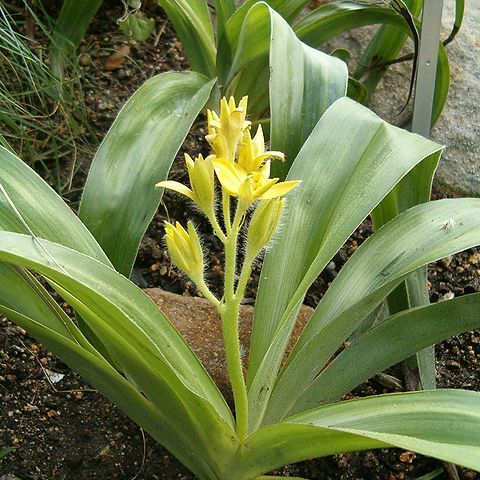Perianth ± persistent; perianth segments (tepals) (4)6, erect or spreading, subequal or somewhat heterochlamydeous, free, or lower part of perianth segments fused below into a narrow tube (the perianth tube in Curculigo)
Stamens 6, usually in 2 whorls (3 stamens in Pauridia); filaments short, arising from the base of the tepals; anthers 2-thecous, entire or deeply sagittate, opening introrsely or latrorsely by longitudinal slits
Inflorescences 1–several, terminal, scapose; scapes ± terete or flattened, with flowers solitary or 2–many spicately to racemosely or corymbosely arranged
Herbaceous geophytes perennating by rhizomes or corms with contractile roots (the aerial parts dying back after the growing season)
Ovary inferior, 3-locular with axile placentation (or 1-locular); ovules few to many; style 1, filiform to subulate; stigmas 3–6
Stamens 6 or rarely 3, opposite the perianth-segments and inserted at their base; anthers 2-celled, opening lengthwise
Perianth-tube nothing or very short or consolidated into a long beak on top of the ovary; segments 6, spreading, equal
Fruit a capsule opening by a circular slit or by vertical slits near the top, or indehiscent and fleshy
Fruit a capsule with circumscissile or loculicidal dehiscence, or sometimes ± fleshy and indehiscent
Seeds ellipsoid to globose, sometimes with a distinct strophiole(Curculigo), dark brown or black
Flowers solitary, spicate, racemose or subumbellate, mostly white or yellow, actinomorphic
Leaves mostly all radical, usually prominently nerved and often clothed with long hairs
Flowers bisexual, actinomorphic, 3(4)-merous, usually pedicellate
Ovules numerous in 2 series on axile placentas, or rarely few
Ovary inferior, 3-celled, style short or 3 styles separate
Seeds small; embryo in abundant endosperm
Herbs with a tuberous rhizome or a corm
Pending. See Nordal (1998).

